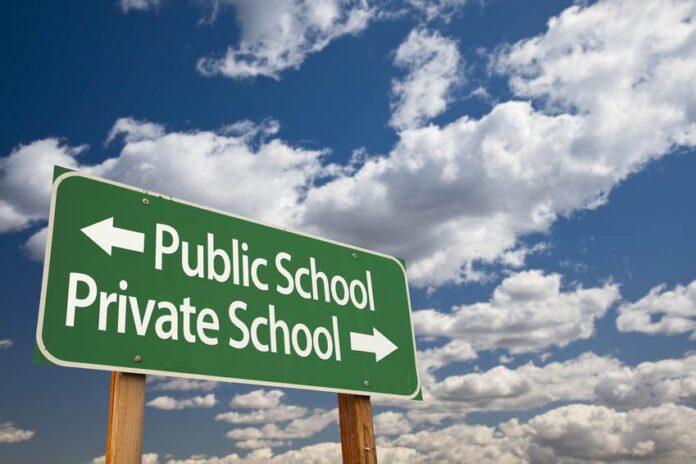Perhaps this blog title should read ‘State School vs Faith School vs Independent School’. Substituting Postcode Lottery School for State School merely seeks to draw attention to the fact that finding a good state school is a lottery and dependent on location.
Up until now I was not aware of the minefield of selecting a primary school. We are currently locked in a tussle trying to figure out what is best and which schools we should submit applications to for our son Dragon. A good place to start would be to provide a brief definition of the types of schools available at primary level.
State School
State schools generally refer to primary or secondary schools mandated for or offered to all children without charge, funded from taxes and most are organised by Local Authorities (LA).
Faith School
A faith school is a school in the United Kingdom that teaches a general curriculum but which has a particular religious character or formal links with a religious organisation. The term is most commonly applied to state-funded faith schools.
Independent School
Independent School (also known private schools) An independent school is a school that is independent in its finances and governance; it is not dependent upon national or local government for financing its operations, nor reliant on taxpayer contributions, and is instead funded by a combination of tuition charges, donations, and in some cases the investment yield of an endowment.
Typically speaking, in the UK (I am guessing this will apply in most parts of the world) all children aged 4-16 are entitled to a free place at a state school or faith school (that is, if you follow a particular religion), which accounts for around 93% with most families perched firmly in this sector. A few, around 7%, will seek an education at an independent school for their kids. Selecting which type of school to attend may appear logical for most based on many factors, but some are forced to consider an alternative option due to circumstances.
Without prior experience of primary school application, when we decided we were moving a couple of years ago, we made sure that the location we ended up in would be 0.5 miles from a good school. To our shock and horror this catchment area game is no joke; we are only 0.39 miles (based on an ‘as the crow flies’ route which is how the schools make their calculation) from our local Ofsted outstanding school. But the catchment area for schools moves year by year. So for our outstanding school in 2013 we were 0.40 miles, in 2014 0.46 miles and in 2015 0.32 miles. We are informed that the figures for 2016 will be similar to 2015, meaning we miss out, as the table below shows.
| Published admission number | 60 |
| Total applications | 405 |
| Cut-off distance | 0.32 miles (2015) |
| Geographical priority | Cut-off distance (nearest child) |
Sounds crazy that within such tight proximity there would be 60 kids living closer than us? Add to this the fact that 30 of the 60 places available will have magically disappeared for siblings once our son has started school, which means that over 300 people will be competing for just 30 places.
Postcode lottery comes to mind when selecting a state school. To demonstrate this phenomenon is UK wide let’s consider 2014 figures where 4,000 pre-schoolers were left without an offer of a primary school. These figures followed the same pattern in 2015 where, out of around 600,000 applications, 86% (516,000) were granted their first preference, meaning 84,000 missed out in 78 local authorities. Data available for 44 local authorities shows that 96% attained one of their first three preferences. If you’re one of the lucky few to be offered one of your top three primary schools, then you’re faced with the class size predicament. Data obtained by the Telegraph shows that 102,615 pupils aged between five and seven (from a total of between 500,000 and 600,000 pupils) are being taught in classes with at least 31 children.
A more attractive version of a state school is faith schools. These types of schools have a good record of delivering a high quality of education for those with a faith or those that qualify. Faith schools are, however, selective and there is some evidence that they take a less than representative sample of deprived children and more than their share of the children of ambitious and wealthier parents, which many consider explains their academic success.
I personally have heard of many parents going to church to ensure they can get their kids into a faith school, but faith schools are becoming wise to this. To stand a chance of getting their kids in many parents have to ensure their kids are baptised within the first six months of birth. In England around 7.4% of adults go to church on average, but some reports, indicate that many are finding faith to help give their kids the best start in life.
Who can possibly blame parents for trying to get their kids the best possible education? If one looks at the national league tables list of top schools, this is littered with faith schools, even though they make up just a third of all schools nationwide. Many believe that the reason for the high performance comes down to the fact that faith schools select the brightest pupils from middle-class families.
This then leaves the option of independent schools; my wife and I are giving this serious consideration. We feel that aside from this outstanding state school potentially available to us, the other schools in our proximity are fine, but as a parent you question the quality based on the available data. However an independent school is not guaranteed either. We have placed our three year old Dragon on a list to get him into an independent school. But these schools are very selective, in the modern day there are lots of wealthy individuals who can afford them. So the schools subject three year olds to assessment days, to test them. We just received our letter inviting Dragon in for an assessment and this is what we can expect:
“The test aims to identify emerging literacy skills, recognition of shape, colour and number and the ability to interact with peers and staff. Hopefully the assessment will be an enjoyable experience for the children.”
I am often quizzed by friends about why I want to send my kids to an independent school as I turned out fine without one. Before I address this, I must admit that my wife and I have said from the outset that we wanted to send our kids to an independent school before even having kids, and eventually realising that we only have one outstanding primary school near us.
I have been very fortunate in life to obtain a doctoral degree. This I must admit has been through hard work. But when I arrived at university with 163 other students, I really realised the power of education. Many of those that I attended university with were privately educated or lived in an area where there were only five in a class. The manner in which my fellow students approached problem solving was on other level, they had been educated to be good at it. I do not believe that they were all born with higher intelligence, but more a case of being coached in a very clinical way.
Our thought process in subjecting Dragon to this assessment has been made on an individual case; I would easily be happy to place my daughter Horse in a state school. But Dragon is very sociable, loves pushing boundaries and shows signs of brains (but will easily get distracted). It is for these reasons that we want to ensure that he is in a class were the numbers are low (16 in this particular independent school). State schools have changed a lot since we were in school, parenting has also changed over those years and the morals which I feel were instilled into us back in the 70s and 80s are now few and far between.
Clearly there are some fantastic state schools which are comparable to the best independent schools, but not everyone can attend these schools. Faith schools are a real alternative, as even with higher class numbers than independent schools, they still perform incredibly well, and to top it off you can make a massive saving, but one must have faith to even stand a chance of getting in. With the current state of austerity around the world many would think competition for independent schools would be low, however this is not the case; this only serves to prove the benefit many parents perceive of sending their kids to an independent school. I for one have seen the benefits of independent schools, and love the range of skills the kids acquire; the exposure to many activities which I personally believe has all the potential to create a well-rounded child. But the pivotal reason why we want an independent school comes down to sports. My wife and I have gained a lot through our achievements in sports and this set us both up at the top of the educational ladder. Many state schools and faith schools just do not instil sports as a credible partner to academics, which we do not agree with. A healthy body is a healthy mind, and if that fails, then I guess the discipline one gains from sports, helps in all aspects of life!
Note
For those outside the UK, Ofsted is the Office for Standards in Education, Children’s Services and Skills. They inspect and regulate services that care for children and young people, and services providing education and skills for learners of all ages.
Sources
- Laura Clarke, Parents ‘only go to church for places at faith schools’, Daily Mail, 16 March 2014, accessed 15 November 2015
- Javier Espinoza, Primary school places: thousands miss out on first choice school, 16 April 2015, accessed 15 November 2015
- Graeme Paton, School admissions: 4,000 pupils ‘fail to get primary place’, 24 June 2014, accessed 15 November 2015
- Graeme Paton, Primary school tables: faith schools dominating rankings, 11 December 2014, accessed 15 November 2015
- Katie Strick, Primary school admissions 2015: local authority figures, The Telegraph, 16 April 2015, accessed 15 November 2015
- BBC.co.uk, Different types of school, accessed 15 November 2015
- GOV.UK., Ofsted, accessed 15 November 2015
- GOV.UK., Types of school, accessed 15 November 2015
- Humanism.co.uk, Faith Schools – Why Not?, accessed 15th November 2015
- Bromley.gov.co.uk, Infant, junior and primary schools in Bromley, accessed 15 November 2015
- New Schools Network, Comparison of different types of school. A guide to schools in England. January 2015, accessed 15 November 2015
- Wikipedia, Faith School, accessed 15 November 2015
- Wikipedia, Independent school, accessed 15 November 2015
- Wikipedia, State School, accessed 15 November 2015
- Woodlands Junior School, Types of Schools in England, accessed 15 November 2015


